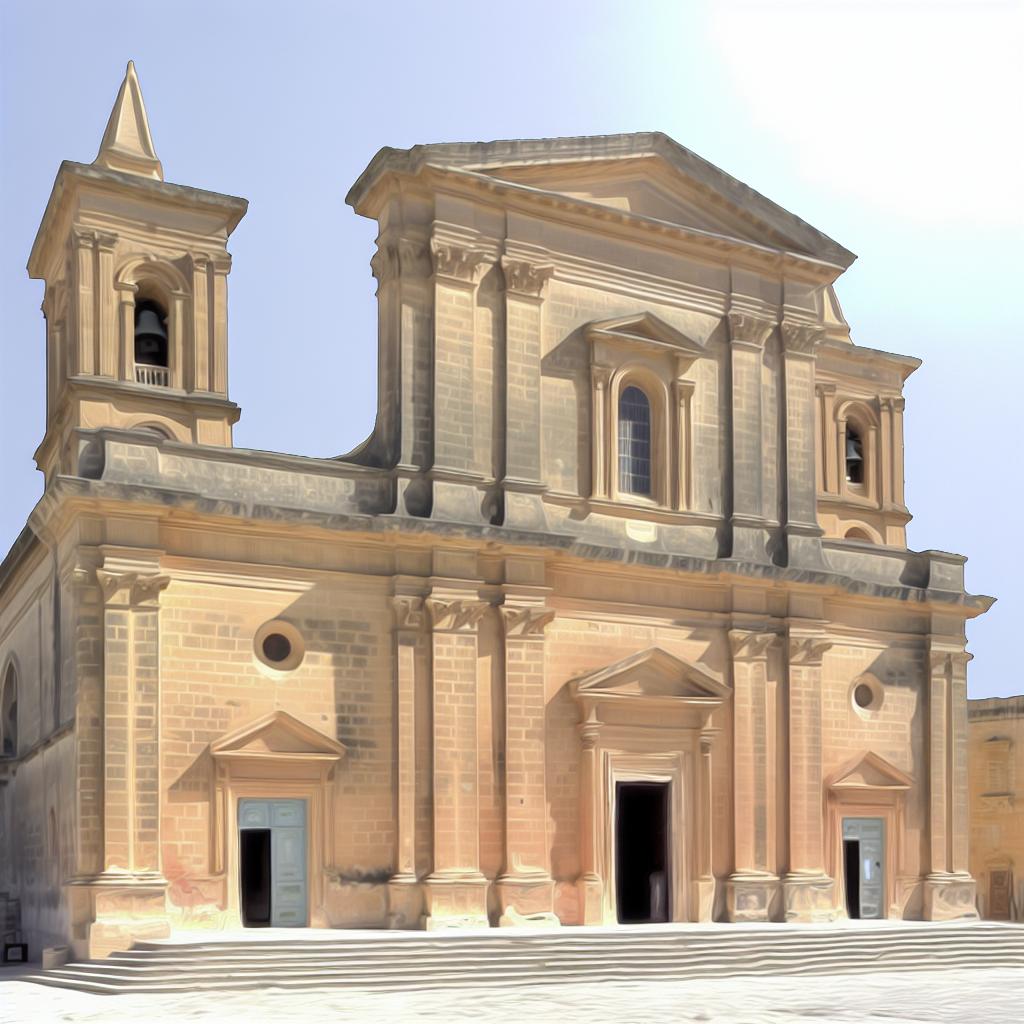Introduction to Ta’ Pinu Basilica
Ta’ Pinu Basilica, a cherished religious site located on the scenic island of Gozo in Malta, is a prominent architectural and spiritual landmark. Situated near the quaint village of Għarb, this basilica gracefully dominates the landscape, offering a fascinating blend of historical significance and spiritual tranquility. The monument stands as a beacon of the Maltese people’s rich cultural and religious heritage.
Historical Background
The story of Ta’ Pinu Basilica is deeply intertwined with Maltese history, tracing its roots back to a humble chapel built in the 16th century on the exact site where the basilica now stands. This modest chapel became an integral part of local spiritual life, serving as a place of worship for the surrounding community.
In the late 19th century, the chapel garnered attention following reports of miraculous occurrences and healings. Such events added to the site’s growing reputation as a spiritual haven, drawing pilgrims from across the region. People visited with faith, seeking solace and divine intervention, which further solidified the chapel’s role as a pilgrimage destination.
By 1932, with the influx of visitors and the chapel’s increasing significance, the new basilica was completed. Designed in the neo-Romanesque style, the new structure not only served religious functions but also emerged as a symbol of artistry and devotion, highlighting the craftsmanship and dedication of the Maltese people.
Architecture and Design
The architecture of Ta’ Pinu Basilica is a marvel of intricate stonework, showcasing the remarkable craftsmanship evident both inside and outside the structure. Its design in the neo-Romanesque style exhibits a timeless elegance, characterized by balanced proportions and an affinity for classical forms.
The exterior of the basilica is adorned with elegant bell towers, which add to its grandeur and prominence. These towers not only accentuate the basilica’s silhouette against the sky but also play a functional role in calling worshippers to prayer.
A large and inviting courtyard surrounds the basilica, enhancing its majestic appearance and offering a space for reflection and gathering. This open space serves as an initial respite for visitors, providing a moment of pause before entering the sacred interior.
Once inside, visitors are often captivated by the magnificent stained-glass windows that adorn the walls. These windows filter sunlight into vibrant colors, creating an atmosphere of awe and reverence.
Equally impressive are the detailed mosaics that line the walls and ceilings, each telling a story of faith and devotion. The artistry of these mosaics enhances the spiritual experience, inviting contemplation and connection to the divine.
The intricately carved altars, made with incredible detail, further demonstrate the high level of craftsmanship and insistence on beauty that characterizes the basilica’s construction. Every element of the design serves as a tribute to Malta’s rich cultural and religious legacy.
Significance in Maltese Culture
Ta’ Pinu Basilica holds a profound place in Maltese culture, being recognized as a national shrine. Its significance is deeply tied to the tales of miraculous healings and the numerous answered prayers that have been reported by visitors over the years.
These elements contribute to the basilica’s status as an essential spiritual and religious hub in Malta. It stands as a symbol of faith and hope, continually attracting pilgrims who come seeking divine assistance or to express gratitude for prayers answered.
Beyond its religious importance, Ta’ Pinu Basilica also serves as a cultural icon, representing the endurance and faith of the Maltese people throughout history. Its presence is a testament to the shared heritage that continues to unite and inspire the nation.
Visiting Ta’ Pinu Basilica
For those planning to visit Ta’ Pinu Basilica, there are a variety of engaging activities to experience. Visitors are welcome to attend mass to partake in the community’s spiritual practices. In addition, the peaceful grounds provide the perfect setting for personal reflection, prayer, and meditation.
While Ta’ Pinu is open to the public, it remains an active religious site. As such, it is important for visitors to maintain a demeanor of respect and reverence during their time at the basilica. This ensures that the sanctity of the space is preserved for all who come to seek peace and spiritual fulfillment.
For those interested in learning more about visiting hours, special events, or the rich history of Ta’ Pinu Basilica, you can explore the official Ta’ Pinu Basilica website. This resource offers comprehensive information about the basilica’s background, its significance in the Maltese religious landscape, and details about current and upcoming events.
Engaging with the basilica’s rich history, stunning architecture, and cultural significance offers visitors a unique opportunity to immerse themselves in Malta’s vibrant spiritual traditions. Whether you arrive seeking solace, cultural enrichment, or religious engagement, Ta’ Pinu stands as a place where the past and present harmoniously converge, allowing all who enter to experience its profound impact.

